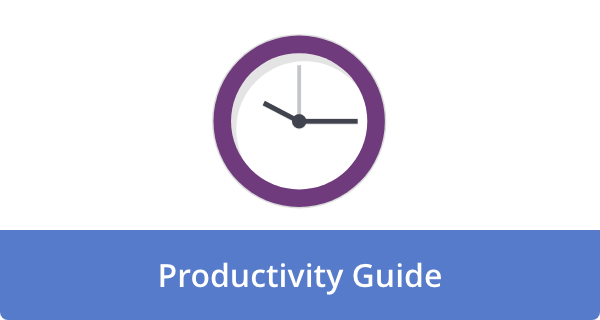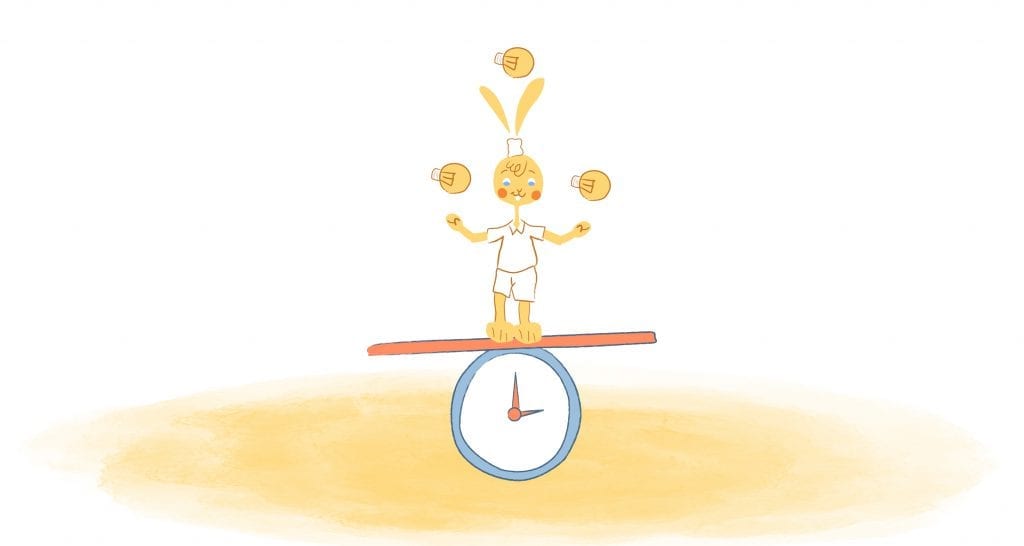

Have you ever glanced at any self-improvement feeds? You’ll likely see a list of what they’d call “ideal” morning rituals. However, at the top of the list, you’ll find people like Apple CEO Tim Cook, ‘Shark Tank’ investor Kevin O’Leary, actor Michael B. Jordan, and tennis star Naomi Osaka who wake up before 6 a.m.
What is their morning routine like? Well, it depends. Some people meditate, journal, or work out. Others may brave a cold plunge, read, catch up on emails, or brew organic green tea. It’s an impressive picture of success, with color-coded schedules and sunrise selfies.
The problem is that most people don’t have the time or energy to perform an hour-long ritual in the morning. Further, forcing yourself to follow a routine you don’t enjoy or need can be counterproductive.
Rather than trying for the perfect morning, focus on what matters most: owning your first 10 minutes.
Why the First 10 Minutes Matter More Than the Next 50
We all have a unique and potent power in the moments just after we wake up. In the period between sleep (predominantly theta waves) and more alert consciousness (alpha and beta waves), our minds are incredibly impressionable. These initial ten minutes, this brief window, set the tone for our day by influencing our mood and sharpening our focus. This ultimately shapes our productivity.
During those early stages, imagine your brain as a pristine sponge, ready to absorb whatever it encounters. Inevitably, the thoughts, sensations, and inputs you are exposed to during this delicate transition will seep into your subconscious. As a result, this will affect your future experiences. Suppose you start the day by directly engaging with the outside world, such as endless pings from emails, social media, or alarming headlines from the news. In that case, you may unintentionally lead to stress, comparison, and distraction.
On the other hand, you can control this crucial neurological window by directing those first few minutes. As opposed to an elaborate hour-long routine, owning ten minutes seems inherently manageable and sustainable, no matter how chaotic or time-constrained your life is. And, believe it or not, everyone can dedicate ten minutes to intentionally shaping the first moments of their day — no matter how busy their schedule is.
What Owning Your First 10 Minutes Looks Like
It’s not about stuffing every self-help guru’s advice into your head before you’ve even sipped water. Instead, it’s about cultivating intention and embracing simplicity in those crucial first moments. These five core principles can turn your first ten minutes into a powerful launchpad for the rest of the day.
1. Protect your inputs.
It’s impossible to resist the allure of your smartphone when you wake up in the morning. But TRY! Checking emails, scrolling through social media feeds, and reading the news can feel almost instinctive. However, these immediate inputs often trigger a cascade of unwanted emotions: the stress of unanswered emails, the comparison trap on social media, or the anxiety evoked by negative news stories.
Instead: For the first ten minutes after waking, resist the urge to reach for your phone. Consider putting your phone in airplane mode at night if your phone is your alarm. By creating a mental buffer zone, you can choose what enters your mental space instead of being ruled by algorithms.
I read a neurologist’s review this week that recommended hopping out of bed when you wake up, running to the bathroom, looking in the mirror, and saying that you will have the best day ever, then immediately brushing your teeth with your non-dominant hand. I’ve only tried this for a week—I’ll let you know what I find.
2. Do one small, grounding action.
You can think of this as your anchor. In other words, it is a brief and deliberate action that prompts you to come into the present and signals to your body that your day has begun with intention instead of a jarring awakening.
Examples:
- Your senses are awakened by splashing cold water on your face.
- Spend 60 seconds on gentle stretching, releasing sleep-related tension.
- You can connect with the outside world by opening the window and taking a few deep breaths.
- Take a moment to ground yourself physically by standing barefoot on the floor.
The goal isn’t to achieve peak physical performance or master a complex mindfulness technique. It’s about cultivating a sense of presence and letting your nervous system know that your transition to the day is grounded and intentional rather than reactive.
3. Ask one powerful question.
In addition to directing our focus, questions prime our brains for specific outcomes. You can subtly channel your mental energy towards more productive and positive routes by posing a well-crafted question in the first ten minutes of the day.
Here are some prompts to consider;
- “What is one meaningful step I can take today to achieve my goals?”
- “What would make today truly fulfilling and successful?”
- Is there a way to engage today proactively rather than reactively?”
Ultimately, the power of a question is not in having immediate, definitive answers, but in asking it. As you go about your day, these inquiries act as subtle prompts, guiding your subconscious to seek solutions and opportunities.
4. Visualize a micro-win.
Don’t stress yourself with grand, sweeping visuals of your five-year plan. Rather than fretting, take a mere 60 seconds to visualize yourself achieving success in one small area of your day.
Among the possibilities are;
- During a meeting, deliver a key point with confidence.
- Having a calm, productive conversation with a colleague or loved one.
- Achieving a goal you’ve been procrastinating on.
When your brain can visualize a positive outcome, it subtly prepares you for it. It’s not about manifesting magic through sheer willpower, but about focusing, anticipating, and priming your mind for success.
5. Move, even a little.
No need to launch into a strenuous 30-minute workout or a complicated yoga sequence. This is simply a gentle wake-up exercise that gets your blood flowing.
Here are a few simple suggestions;
- Engage your leg muscles by performing ten basic air squats.
- To elevate your heart rate, do 30 seconds of gentle jumping jacks.
- Take a short walk around your room to stimulate circulation.
Instead of replacing your regular exercise routine, this minimal movement serves as a physical cue to your body that it’s time to get started. Even small amounts of physical activity trigger the release of neurotransmitters, including dopamine and norepinephrine, that boost mood, sharpen focus, and increase alertness.
What If Your Mornings Are a Mess?
Because of its adaptability, this strategy is particularly effective even in chaotic or unpredictable mornings. Whatever your situation—whether you are juggling parenthood, facing an early commute, or just not naturally inclined to rise early—you still have time to spare. Depending on the situation, this may require breaking it down into smaller chunks or strategically adjusting the surrounding environment.
Here are some practical tips to consider;
- Keep a glass of water, a notepad, and a pen by your bedside for immediate hydration and to jot down your morning questions.
- While in bed, record a brief “note to self” voice note outlining your intentions for the day. Sometimes this one gets me amped up. I want to be “perfect” and have really “big” goals. My goals are defined; I don’t have to do this for anyone but me. Now, I chill and say, “I will have a great day. I will do good work and handle whatever comes up with grace.” This has helped SO much.
- You can increase the effectiveness of habit-stacking by linking your ten-minute practice with an existing morning habit. For example, “After brushing my teeth, I will ask my morning question.”
Implementing this strategy does not require absolute silence or complete solitude. Nurturing yourself in the morning rush only takes a tiny sliver of intentional space. I also listen to a bit of a book I’m working on, and put on music that inspires.
Rethinking the Morning Routine Trap
In a sea of productivity advice, one fundamental truth often gets lost: You don’t need more habits; you need better ones. Due to their pervasiveness, elaborate, multistep morning rituals are often mistaken for sources of guilt and self-recrimination. If you miss even one element of your meticulously planned 90-minute routine, you may feel behind by 9 a.m. — and you had to be at work before 8:00!
On the other hand, owning your first ten minutes is inherently guilt-free. Because of its simplicity and flexibility, it is more likely to be consistently implemented, even on the most challenging of mornings. It helps you move from reactive responsiveness to deliberate intentionality without making any significant changes to your life.
A Simple 10-Minute Morning Framework (You Can Stick To)
Below is a sample sequence you can easily adapt and complete within ten minutes.
- Hydrate (30 seconds). Take a few sips of water to rehydrate your body after sleeping.
- Gentle movement/breathwork (1–2 minutes). To softly awaken your body and mind, practice a few simple stretches and take several deep, conscious breaths.
- Visualize a micro-win (1 minute). Imagining yourself successfully navigating one aspect of your day is a great way to open your mind.
- Identify your key task (2 minutes). Jot down the most important task you want to complete today, so you’ll know where to focus your energy.
- Light physical movement (1–2 minutes). Do a few squats or jumping jacks for a quick boost of energy. If that works better for you, you may want to do this one directly after the gentle morning/breathwork.
During particularly rushed mornings, you can swap elements, adjust the timing, or skip a step (or add a step). I make my bed and throw in a batch of laundry. Helps a ton. But the key remains to keep it simple, focused, and intentional.
Final Thought: Start Where You Are
Let go of the mythical “perfect” morning. It doesn’t take expensive gadgets, exotic ingredients, or the approval of a self-proclaimed guru to cultivate a positive attitude and productive day.
You only need ten minutes of consciously controlled time before the demands and distractions of the world fully encroach on your consciousness.
Rather than reaching for your phone on the first external stimulus tomorrow morning, pause and ask yourself:
Is there one small, deliberate way I can own this day, starting from these first moments?
Once you’ve done this, take one small action. As the ripple effect of intent unfolds, observe how your days are transformed in the morning and throughout the day.
FAQs
What is the core idea behind “Own the First 10 Minutes”?
Rather than a rigid, often lengthy “morning routine,” this method suggests using the first 10 minutes of your morning intentionally and mindfully. Through a brief, personalized practice, it focuses on setting a positive and focused intention for the day ahead.
How does “Owning the First 10 Minutes” differ from a “morning routine?”
Rather than following a set morning routine (e.g., making the bed, exercising, journaling — which I hate), “owning the first 10 minutes” relies on flexibility and intentionality. As opposed to just completing tasks, it emphasizes mental and emotional preparation. The most important thing is how you start your day, not what you do.
Why is focusing on the first 10 minutes more effective than a longer routine?
Your first few minutes after waking up will likely influence your attitude towards the day. By intentionally shaping this period, you can cultivate calm, focus, and purpose before the day’s demands take over. It’s about building a positive anchor to help you through tough times. Additionally, it is less likely to feel like a chore than a lengthy routine.
Does this approach suggest I should completely abandon my existing morning routine?
Not necessarily.
It’s great if your current morning routine works for you. However, “owning the first 10 minutes” encourages you to evaluate whether your daily routine truly serves you or has become a mindless series of activities. If you want to improve your routine, you can incorporate this concept into those 10 minutes.
What if I don’t have 10 minutes in the morning? Can I still apply this concept?
Absolutely.
Making a difference only takes 1-5 minutes of focused intention. After all, it’s more important to focus on the quality of those moments than their exact duration. So, adapt the practice to fit your available time.
Image Credit: Acharaporn Kamornboonyarush; Pexels











Deanna Ritchie
Editor-in-Chief at Calendar. Former Editor-in-Chief, ReadWrite, Editor-in-Chief and writer at Startup Grind. Freelance editor at Entrepreneur.com. Deanna loves to help build startups, and guide them to discover the business value of their online content and social media marketing.